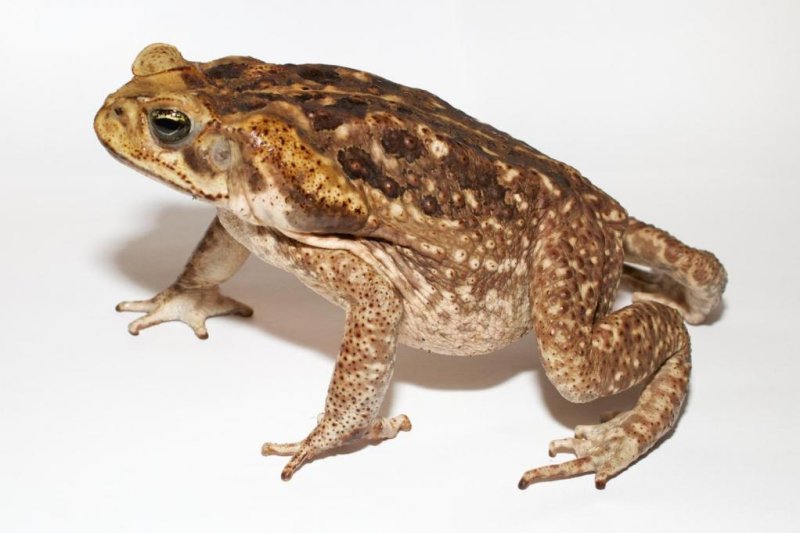The compounds secreted by many amphibian species, including the cane toad, Rhinella marinus, are used in traditional medicine. Photo by Brian Gratwicke/STRI
Jan. 27 (UPI) -- New research details the medicinal potential of Bufonidae, a large tropical frog family. Secretions from Bufonidae species have been used in traditional folk medicine for centuries.
Researchers suggest the family may be harboring dozens of undiscovered chemical compounds with medicinal value. But as the new study warns, the family includes several endangered species, like Panama's golden frog -- species which could disappear before scientists have a chance to study them.
Despite the medical value offered by the Bufonidae family, the most of the family's 580 species have yet to be studied by chemists.
Compounds yielded from Bufonidae species are used all over the globe to treat both humans and animals. The frogs' skin, bones and organs have yielded by folk remedies and modern drugs used to treat infections, insect bites, allergies, inflammation, pain, cancer, AIDS and more.
The majority of chemicals produced by amphibians are toxins deployed as a defensive mechanism.
"Remarkably, toxins from a single frog skin can kill 130 to 1000 mice," Candelario Rodriguez, researcher at the Center for Biodiversity and Drug Discovery in Panama, said in a news release. "The mechanism of action is to reduce cardiac rhythm, making these interesting candidates as therapeutic compounds.
In the new paper, published in the Journal of Ethnopharmacology, researchers argue more should be done to protect and study amphibians.
Nearly a third of amphibian species are in decline, threatened by habitat loss, global warming and fungal diseases.
"We're slowly learning to breed several members of this amphibian family decimated by the chytrid fungal disease," said Roberto Ibanez, staff scientist at the Smithsonian Tropical Research Institute "That's buying us time to study the chemicals they produce, but it's likely that animals in their natural habitats produce an even wider range of compounds."















